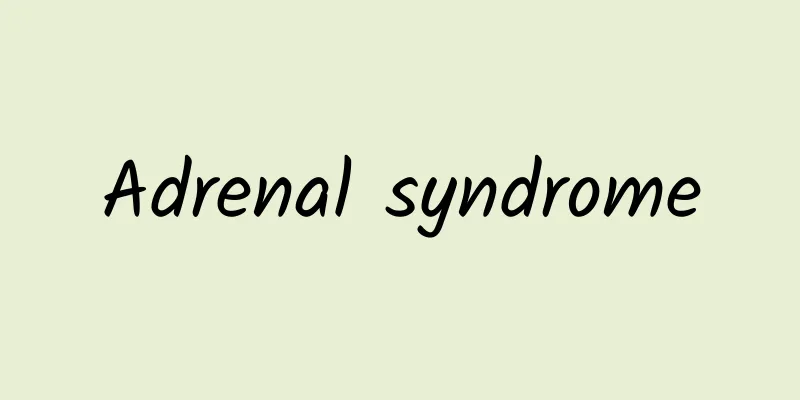The dangers of monocular myopia

|
Myopia can be said to be a disease that people often suffer from nowadays. However, among various ophthalmic diseases, monocular myopia has become a very typical type of myopia. Many people suffer from unilateral myopia due to excessive monocular myopia. Many people think that unilateral myopia is the same as myopia, but in fact, unilateral myopia is more harmful. So, what are the dangers of unilateral myopia? How does monocular myopia come about? 1. Excessive use of one eye Many times, some people like to lie sideways in bed when playing with mobile phones or reading, and they always lean to one side. Therefore, sometimes they overuse one eye, causing that eye to become myopic while the other eye is not affected too much, thus forming what we call monocular myopia today. 2. Eye diseases Normally our eyes form an equal and equivalent visual network, but once a person develops an eye disease and it is only a unilateral eye disease, such as corresponding tumors, inflammation, or glaucoma, it is possible that one eye is normal while the other eye becomes myopic. 3. Eye habits Just like some people like to use their right hand and others like to use their left hand, some people prefer to use their left or right eye alone to look at the same thing. Once this eye is overused, it may lead to visual refractive errors, thus causing myopia in this eye. What are the effects of monocular myopia? 1. Loss of visual function Generally speaking, the difference in the degree of a person's eyes will not exceed two lines. If it exceeds two lines, double vision or amblyopia may occur, so monocular myopia is likely to lead to loss of visual function. 2. Eyes are prone to dryness and fatigue The vision of a normal person's two eyes is often not much different, so once one eye becomes myopic and the other eye is normal, it is possible that the eye will become drier when looking at something, and cause visual and nerve fatigue. 3. Increased intraocular pressure Because the difference between the two eyes is generally not too large, once the difference between the two eyes is greater than 250 degrees, it is possible to make it difficult for the two eyes to fuse visually, thereby causing the eyes to excessively increase the degree of fusion and increase intraocular pressure, inducing the onset of glaucoma. Generally speaking, as long as people do not use only one eye in their daily lives or use their eyes when sleeping on their side while reading, there will basically be no situation where one eye becomes myopic. Because unilateral myopia is likely to lead to serious consequences, everyone must protect their eyes so that you can give yourself a bright future. High myopia at a younger age and monocular myopia have become the two major current situations of myopia among young people. Many parents and students are anxiously asking, "What should I do if I have myopia in one eye? Can I just wear glasses?" In our daily life, there are many people with unilateral myopia. Many children with monocular myopia use orthokeratology lenses to control it. This not only prevents children from wearing frame glasses and controls the development of myopia, but also helps establish children's three-dimensional vision. Why is it more recommended for people with monocular myopia to wear orthokeratology lenses? The maximum refractive error that the human eye can tolerate is 250. For children with unilateral myopia, if the difference in myopia between the two eyes exceeds 200 degrees, it is considered to be anisometropia. The main hazards of anisometropia: 1. Damage to binocular stereoscopic vision: unable to adapt to the frame, the imaging of both eyes is inconsistent, the brain will "fight", and you will feel dizzy and unable to adapt when wearing the frame; 2. Leading to monocular amblyopia and exotropia: Due to the inability to adapt and the blurred image formed by the poor eye for a long time, the brain will choose the relatively clear image, which will lead to the suppression of the poor eye and the incomplete development of visual function, that is, simultaneous vision, fusion vision, and stereoscopic vision are not fully developed. Orthokeratology lenses can solve this problem. By wearing them overnight, the image of the worse eye will be roughly the same as the image of the better eye, thus improving binocular vision function. |
<<: How to recover from monocular myopia
>>: What to do if your legs are swollen during pregnancy
Recommend
Is walking good for lumbar disc herniation?
Moderate walking in daily life is good for lumbar...
Is Luo Han Guo effective in treating chronic pharyngitis?
Luo Han Guo is also known as the fairy fruit, whi...
How to treat a sunken eardrum
The sunken eardrum is also called the retracted t...
What are corns?
Corns are mainly caused by some trauma and connec...
What are the effects of blood sandalwood?
In our lives, there are many very precious woods,...
Hemolytic infertility
I believe that many people have never heard of he...
Who is not suitable for Licorice Decoction?
Many friends think that medicines are all right, ...
The dangers of tetanus shots in children
Children's bodies are very fragile. Some haza...
The difference between cyperus rotundus and vinegar cyperus rotundus
Cyperus rotundus is a common Chinese medicine, an...
White spots on children's teeth
Children's physical fitness is relatively poo...
What are the main components of sulfur?
Sulfur is commonly seen in chemistry. It is usual...
Which acupoints should be massaged for headache
I believe that all of my friends have experienced...
Traditional Chinese medicine teaches you how to understand the condition by looking at the complexion!
Chinese medicine emphasizes observation, ausculta...
It turns out that they are the ones causing trouble in the body's metabolism
We all know that human metabolism is very importa...
What should pregnant women do if they have a cold? Dietary remedies are effective
For expectant mothers, colds are a very serious m...









